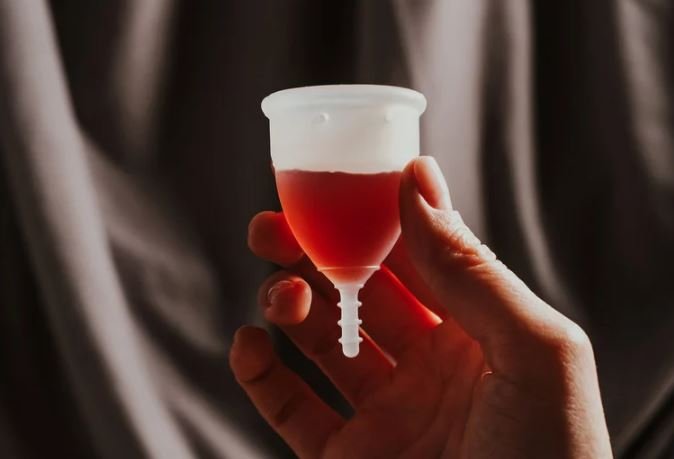Starting your period is a big milestone in life, but it can also bring up plenty of questions. Whether you’ve already started your period or are just getting ready for it, understanding the basics will help you feel more comfortable and confident. Let’s explore the essential facts about periods, how to manage menstrual bleeding, and what to do when you experience cramps or premenstrual syndrome (PMS).
What Is a Period?
A period, also known as menstruation, is the monthly shedding of the lining of the uterus (womb). This lining builds up each month in preparation for a potential pregnancy. If the egg isn’t fertilised, the lining is no longer needed, so it breaks down and leaves the body through the vagina. Most girls start their period between the ages of 10 and 16, although it can vary.
How Long Does a Period Last?
Periods typically last between 3 to 7 days, though every body is different. The length and flow of your period can change from month to month, especially in the early years after you start menstruating. It’s completely normal for your period to be a bit irregular at first. Over time, many people develop a pattern and have a better idea of when to expect their period.
What to Expect When You Start Your Period
When your first period arrives, it’s important to be prepared. You may notice spotting (light bleeding) at first, or it could start with a heavier flow. During your period, you may feel cramping in your lower abdomen or back as your body sheds the uterine lining. These cramps can range from mild to more intense, especially in the first few days of your cycle.
Useful Products
Here are a few useful products that you can use during your period:
- Sanitary pads (also known as pads or towels) – They come in different sizes and thicknesses for light to heavy flow. Pads are worn inside your underwear and have an adhesive backing to keep them in place.
- Tampons – Tampons are small, absorbent tubes inserted into the vagina to absorb blood. They’re a discreet option that allows for more active movement, such as swimming or exercising. Tampons come with or without applicators. Make sure to change tampons every 4-8 hours to prevent infection.
- Menstrual cups – A menstrual cup is a reusable, silicone cup that collects rather than absorbs the blood. Once inserted, it can stay in place for up to 12 hours before needing to be emptied and cleaned.
- Period underwear – Specially designed underwear which absorbs menstrual blood without the need for pads or tampons. These are reusable and can hold different amounts of flow depending on the design.
These products help manage the bleeding and keep you feeling fresh and comfortable. Each option has its pros and cons, so you may need to try a few before finding the one that suits you best. It’s a good idea to keep a mix of products on hand to accommodate different activities and days of your period.
Managing Period Pain and Cramps
Menstrual cramps, are a common part of having a period. They’re caused by the uterus contracting to shed its lining. Cramps can range from mild discomfort to intense pain, particularly on the first or second day of your period.
Here are some ways to ease period cramps:
- Heat: Applying a heating pad or hot water bottle to your lower abdomen can help relax the muscles and ease the pain.
- Over-the-counter pain relief: Medications like ibuprofen or paracetamol are effective in reducing cramp pain.
- Exercise: Gentle exercise, such as walking or yoga, can help improve blood flow and reduce cramping.
- Hydration and diet: Drinking plenty of water and avoiding salty or processed foods may help minimise bloating and discomfort during your period.
If you find your cramps are severe and interfere with your daily life, it’s a good idea to speak with a healthcare provider.
What Is PMS (Premenstrual Syndrome)?
PMS refers to a variety of physical and emotional symptoms that many people experience in the days or weeks leading up to their period. These can include:
- Mood swings or irritability
- Bloating or tenderness
- Fatigue or difficulty sleeping
- Headaches or back pain
- Cravings for certain foods
Not everyone experiences PMS, and the severity of symptoms can vary. If PMS is affecting your day-to-day activities, there are ways to manage it, such as regular exercise, healthy eating, and stress-reduction techniques like meditation.
Can You Stop a Period?
While it’s not possible to permanently stop periods unless you’ve reached menopause, there are ways to delay or temporarily stop periods using hormonal contraception. Options include:
- Birth control pills: Taking birth control continuously without the week-long break can prevent your period.
- Hormonal IUD: Some types of hormonal IUDs can make periods lighter or stop them altogether.
- The contraceptive injection or implant: These methods can also stop periods in some people over time.
Always consult with a healthcare professional before attempting to stop or delay your period using hormonal methods.
Where to Get Advice and Support
If you have any concerns about your period—whether it’s irregularity, heavy flow, or painful cramps—it’s important to seek advice. You can speak with a healthcare provider, visit Suffolk Sexual Health Service, or check out online resources for more information. Remember, it’s completely normal to have questions about your period, and there’s no need to feel embarrassed about reaching out for support.
Final Thoughts
Periods are a natural part of life, and while they can sometimes be uncomfortable, there are plenty of products and tips available to help you manage them smoothly. Whether you’re just starting your period or are looking for better ways to manage cramps or PMS, staying informed will make the experience easier to navigate. Remember, it’s important to talk to a healthcare provider if you have any concerns, and never hesitate to ask for advice or support when it comes to your reproductive.


